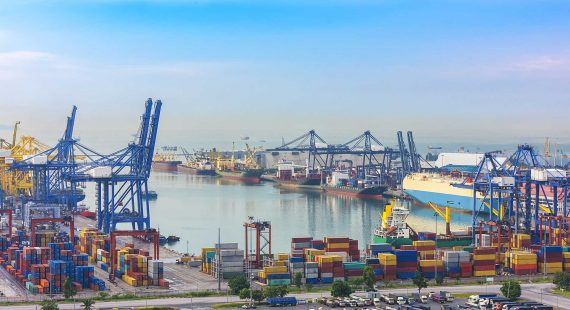
International Logistics and Distribution
THE LOGISTICS CHAIN
Management of logistics is a key factor for satisfying demand in international markets.
In a globalised environment it is not just products that compete, the logistics chains compete too. These chains represent combinations of manufacturers, distributors, and logistics operators, who collaborate to produce the highest efficiency and lowest cost possible for each product, with the requirements for availability and flexibility needed at any given time. In turn, the logistics chains revolve around specialised, high-capacity intermodal logistical hubs, networks, and transportation infrastructure elements.

Collaboration among companies involved in the same supply chain also helps to optimise resources, minimise the need for stock, and reduce supply times through the use of cross trade operations, for example by applying logistical optimisation systems like lean manufacturing.
Within this context, CIT aspects are an indispensable part in terms of managing information flows, allowing product traceability, and carrying out electronic commerce.
The complexity of international trade operations makes the services of a global logistics operator essential, allowing the exporter to focus instead on developing its competitive advantages.
THE LOGISTICS PROCESS IN INTERNATIONAL TRADE
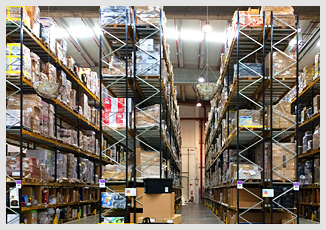
Scheduling for the logistics chain should begin from the very moment a company develops plans to import or export a product. This is because it affects everything from the design of containers or packages to the delivery terms that will be agreed upon in the sales contract, among many other aspects. In addition to the costs inherent to all logistical operations, the main elements that must be considered include:
- Nature and characteristics of the goods.
- The cargo unit.
- The mode of transport.
- The transport process.
- Legislation and standards.
- Logistics in the international sales contract.
NATURE AND CHARACTERISTICS OF THE GOODS
These aspects determine the configuration of the cargo unit and even the mode of transport that should be used, as well as the storage and handling systems. It is worth making a distinction between:
- General cargo in loose units (fractionated cargo) or grouped in pallets (unitary cargo), which is mostly shipped in containers.
- Bulk cargo, which can be shipped in containers or other cargo transport units, or else in bulk ship holds, oil tankers, tanker lorries, etc.
- Oversized cargo, which requires special conditions for handling or transport.
- Controlled temperature cargo: refrigerated, frozen, ultrafrozen, or hot.
- Dangerous goods, particularly those included under international regulations: ADR Convention, IMDG Code, IATA DGR Rules, and the RID Convention.
- Rolling cargo, made up of platforms that can be rolled on wheels, lorry trailers, trucks, train cars, etc. Other goods such as valuable goods or live animals.
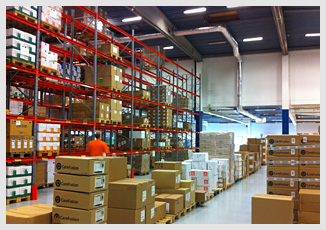
THE CARGO UNIT
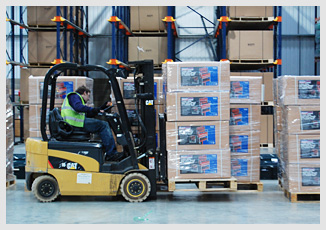
The cargo unit must have two basic qualities: strength and stability. These are achieved through thecontainers and packaging used for the products.
Fractionated cargo is generally grouped onto pallets, which, once shrink wrapped, represent individual cargo units that can be more easily handled and stored. This increases safety and contributes to more efficient handling.
Pallets are usually transported in cargo transport units (CTUs) built for use in intermodal shipping. These CTUs are usually shipping containers, portable boxes, freight train cars, or lorry trailers.
Loading or consolidation of the container must take into account standards established for packing and securing of the goods, and this may be performed by the exporting company or the logistics operator. It can result in either a full container (full container load or FCL) or a consolidated container (less than container load or LCL).
THE MODE OF TRANSPORT
Selection of the mode of transport is conditioned by factors such as the destination country; the nature, value, and volume of the goods; and the planned delivery time.
The transit company must advise the exporter with respect to the itineraries and the shipping mode or combination of modes (intermodal transport, under the scope of a single transport contract), which must be contracted for each leg of the journey:
- Maritime, regulated by the Hague Rules, and where the contract is formalised in the bill of lading.
- Road, where the contract is formalised in the CMR carrier letter, regulated by the CMR Convention.
- Air, regulated by the Montreal Convention and with the contract formalised in the air carrier letter.
- Railway, where the contract is formalised in the CIM carrier letter and regulated by the CIM Convention.
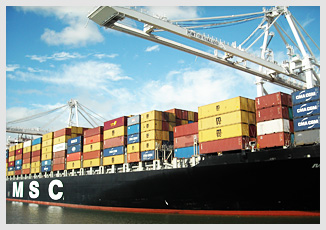
Although most goods packed into containers travel on container ships that follow regular intercontinental routes, there are also goods that travel by air (controlled temperature products, valuable goods, live animals, replacement parts, etc.), while transport across a single continent mainly takes place by lorry or train.
THE TRANSPORT PROCESS
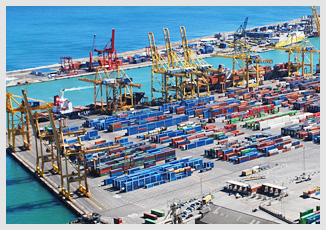
Although there are many details that can vary, the international shipping chain has a series of common processes:
1. Signing of the shipping contract between the loading company (may be the exporter or the importer, depending on the terms agreed upon in the sales contract and established through the appropriate Incoterms rules) and the international logistics operator.
2. Collection of the goods in the exporting company’s warehouse, generally using lorries. The goods are then sent to the shipping terminal (full container) or to the warehouse of the logistics operator (fractionated cargo).
3. Handling and storage at the logistics platform of the transport operator or terminal.
4. Loading and packing onto the means of transport (ship, train, lorry, or airplane) after customs processing at the departure terminal.
5. Shipping of the goods by the main means of transport.
6. Unpacking and unloading at the destination terminal and import customs processing.
7. Handling and storage at the shipping terminal or logistical platform of the international transport operator.
8. Transfer of the goods (full container) to the importing company’s warehouse, or after de-consolidation of the container if fractionated cargo is involved.
LEGISLATION AND STANDARDS
Although the international logistics operator is the party responsible for advising the exporting or importing company on the applicable laws and standards for each shipping operation, it is important to have the most detailed knowledge possible of certain issues that relate exclusively to the loading company, such as those related to, among others:
- Packing and securing of cargo.
- Storage and transport of dangerous goods.
- Storage and transport of perishable goods or products for human consumption.
- Transport of protected species.

LOGISTICS IN THE INTERNATIONAL SALES CONTRACT
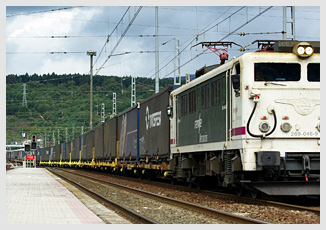
There are aspects related to logistics that require careful planning before any risks and liabilities are assumed in the sales contract, such as:
Establishing and agreeing upon the exact point of delivery in the destination country.
Physical risks associated with the operation (weather conditions, theft, looting, etc.).
Performing an in-depth evaluation of the most appropriate Incoterms 2010 rules to suit the logistical complexity of the operation.
The benefits of using a reliable international logistics operator to control management of the shipping.
The need for insurance coverage for the entire logistics process throughout the shipping chain.






